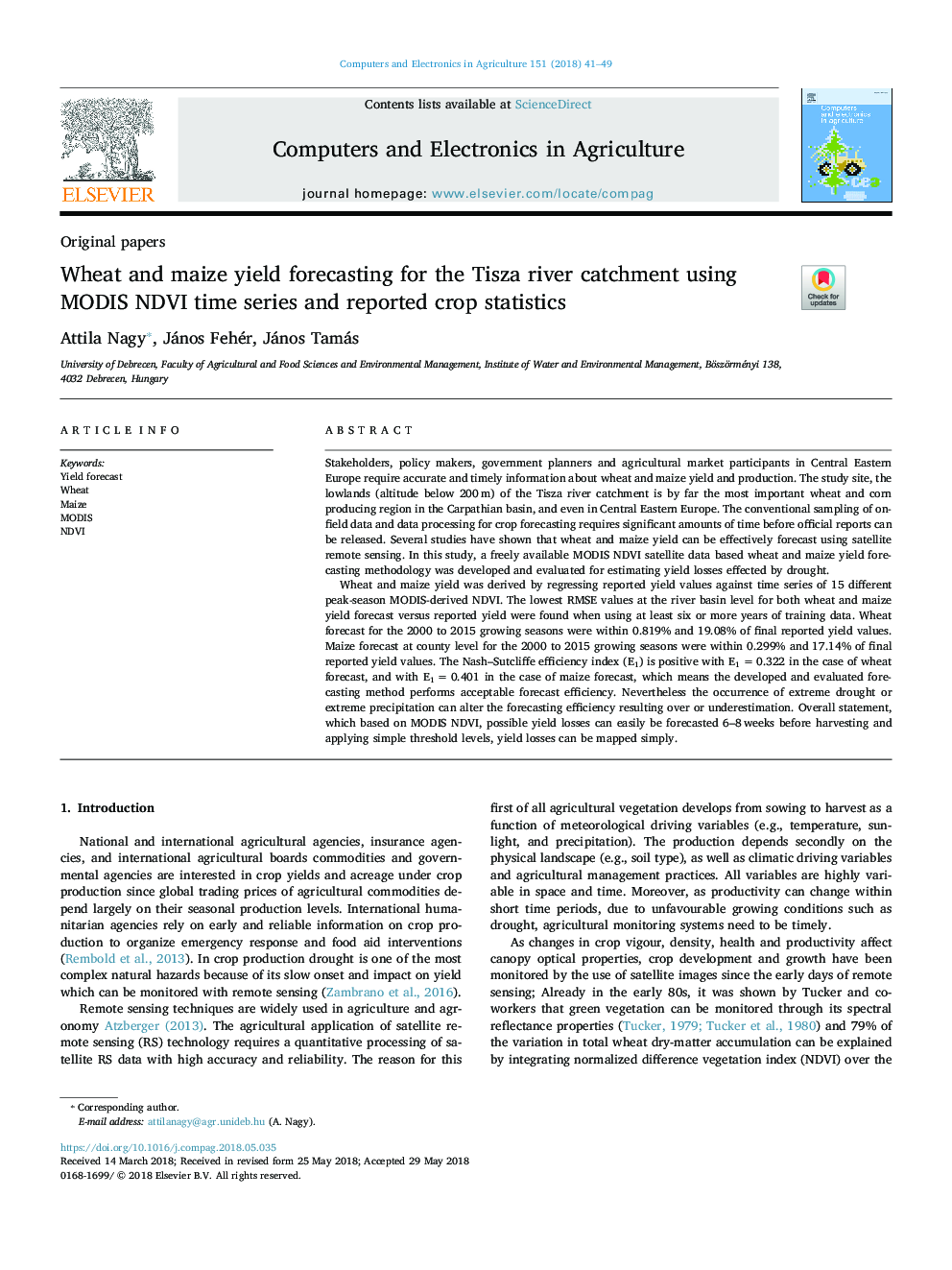| Article ID | Journal | Published Year | Pages | File Type |
|---|---|---|---|---|
| 6539317 | Computers and Electronics in Agriculture | 2018 | 9 Pages |
Abstract
Wheat and maize yield was derived by regressing reported yield values against time series of 15 different peak-season MODIS-derived NDVI. The lowest RMSE values at the river basin level for both wheat and maize yield forecast versus reported yield were found when using at least six or more years of training data. Wheat forecast for the 2000 to 2015 growing seasons were within 0.819% and 19.08% of final reported yield values. Maize forecast at county level for the 2000 to 2015 growing seasons were within 0.299% and 17.14% of final reported yield values. The Nash-Sutcliffe efficiency index (E1) is positive with E1â¯=â¯0.322 in the case of wheat forecast, and with E1â¯=â¯0.401 in the case of maize forecast, which means the developed and evaluated forecasting method performs acceptable forecast efficiency. Nevertheless the occurrence of extreme drought or extreme precipitation can alter the forecasting efficiency resulting over or underestimation. Overall statement, which based on MODIS NDVI, possible yield losses can easily be forecasted 6-8â¯weeks before harvesting and applying simple threshold levels, yield losses can be mapped simply.
Keywords
Related Topics
Physical Sciences and Engineering
Computer Science
Computer Science Applications
Authors
Attila Nagy, János Fehér, János Tamás,
